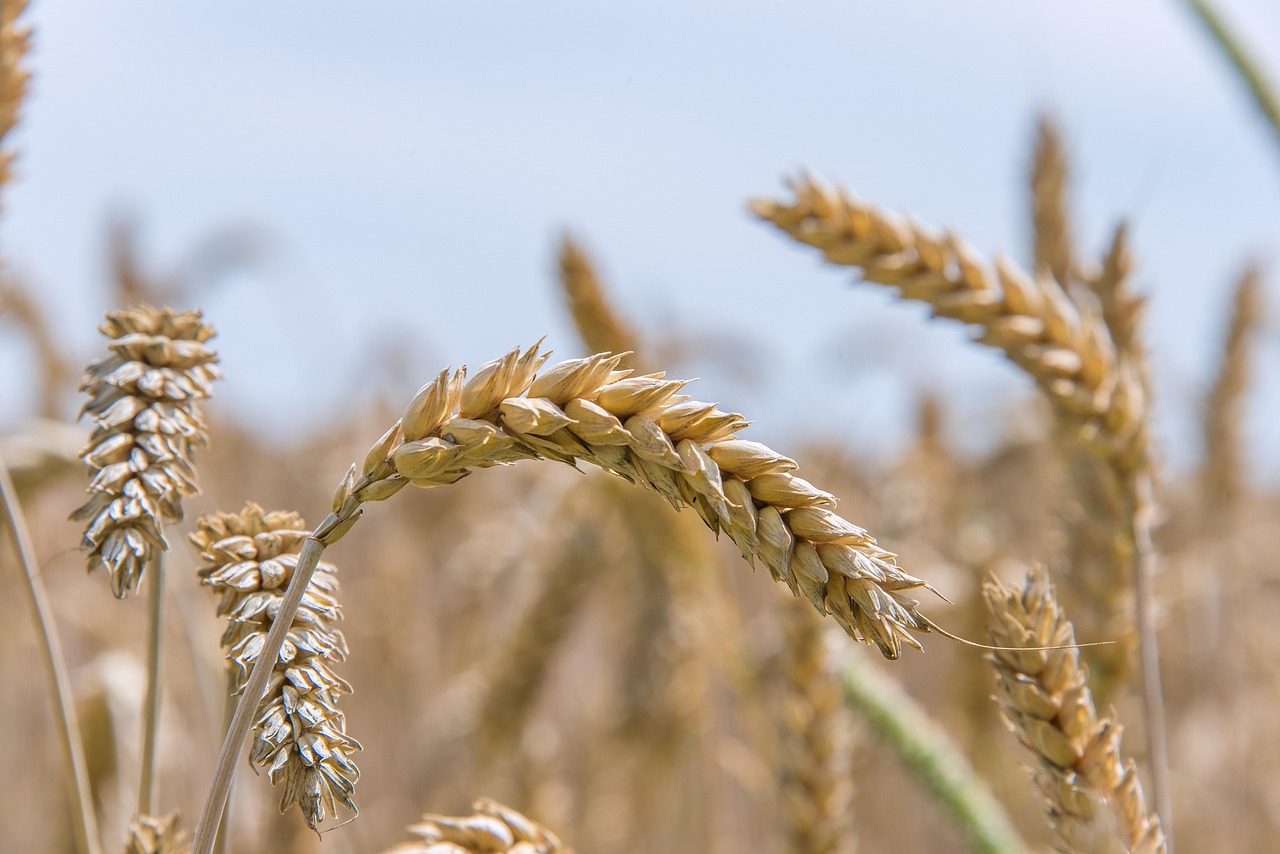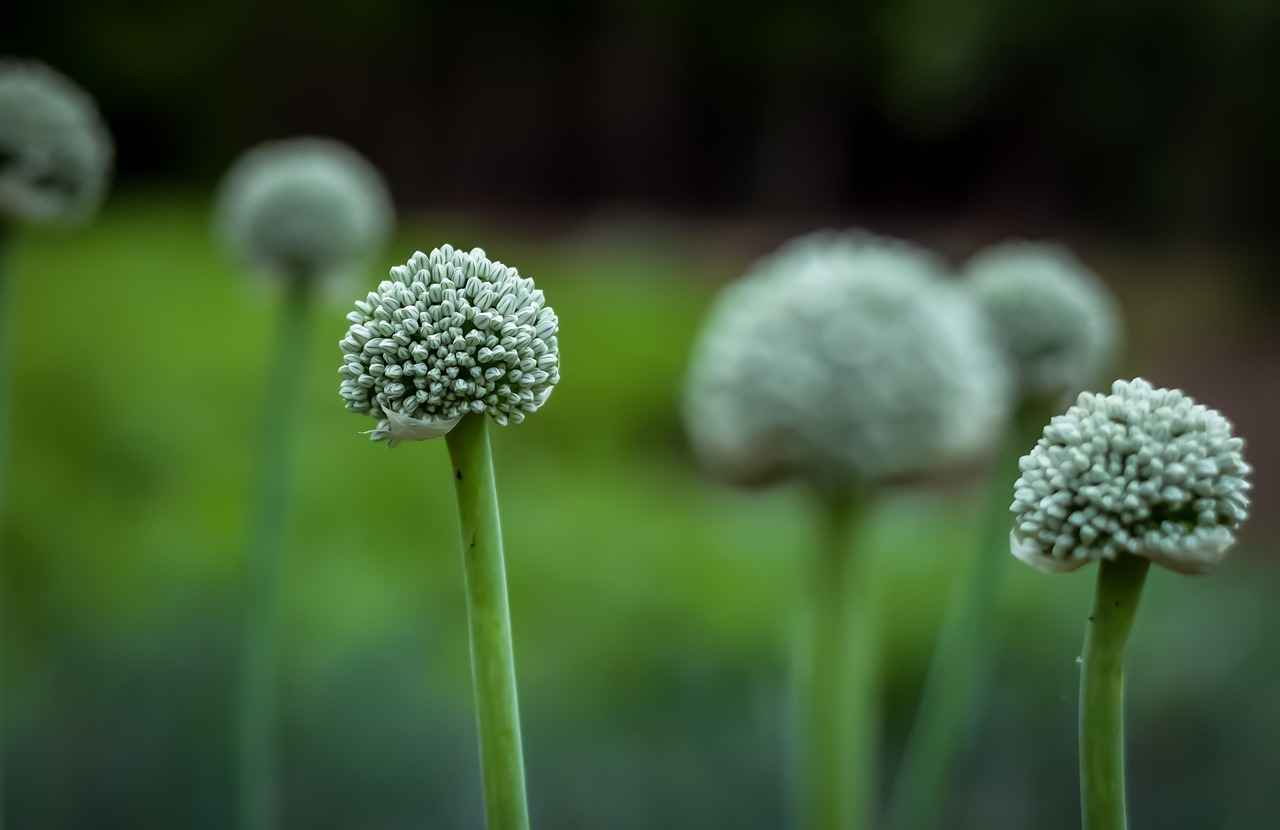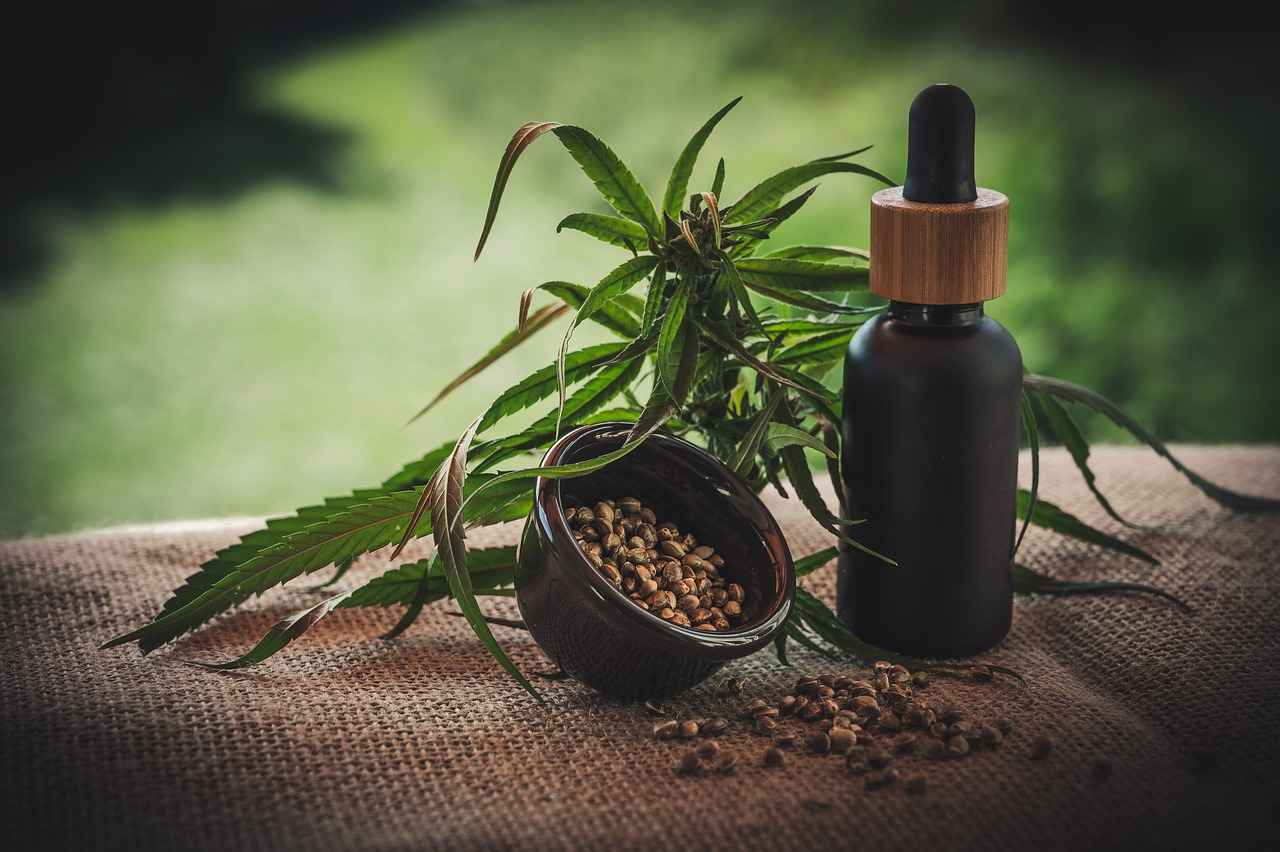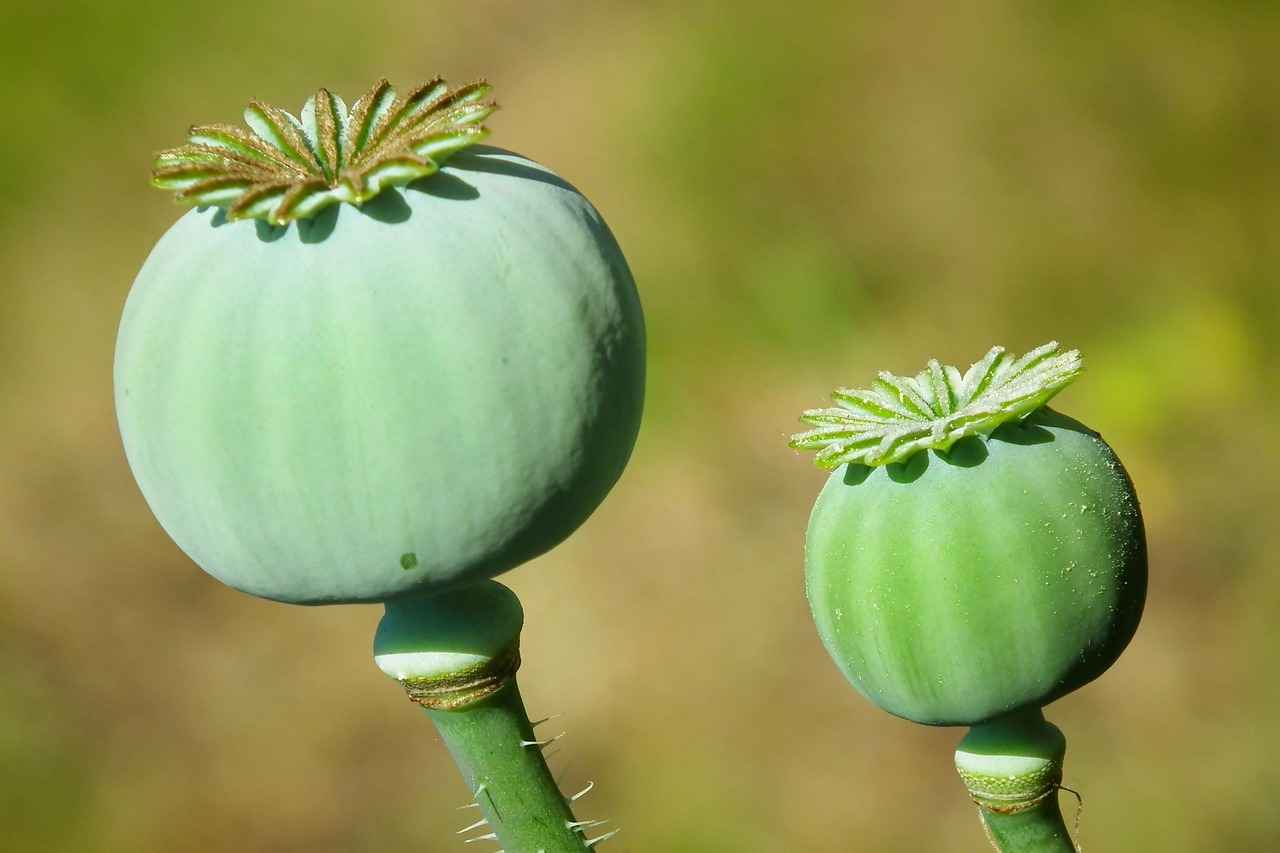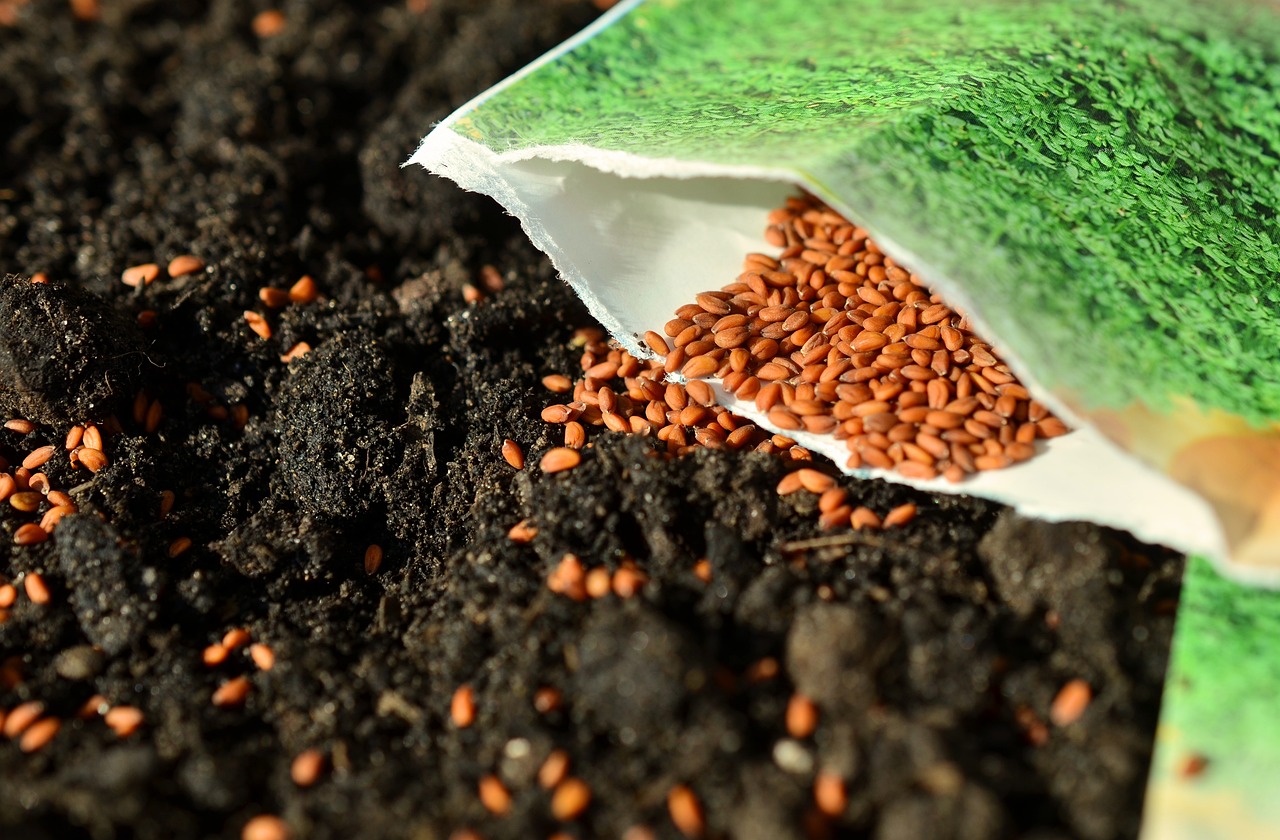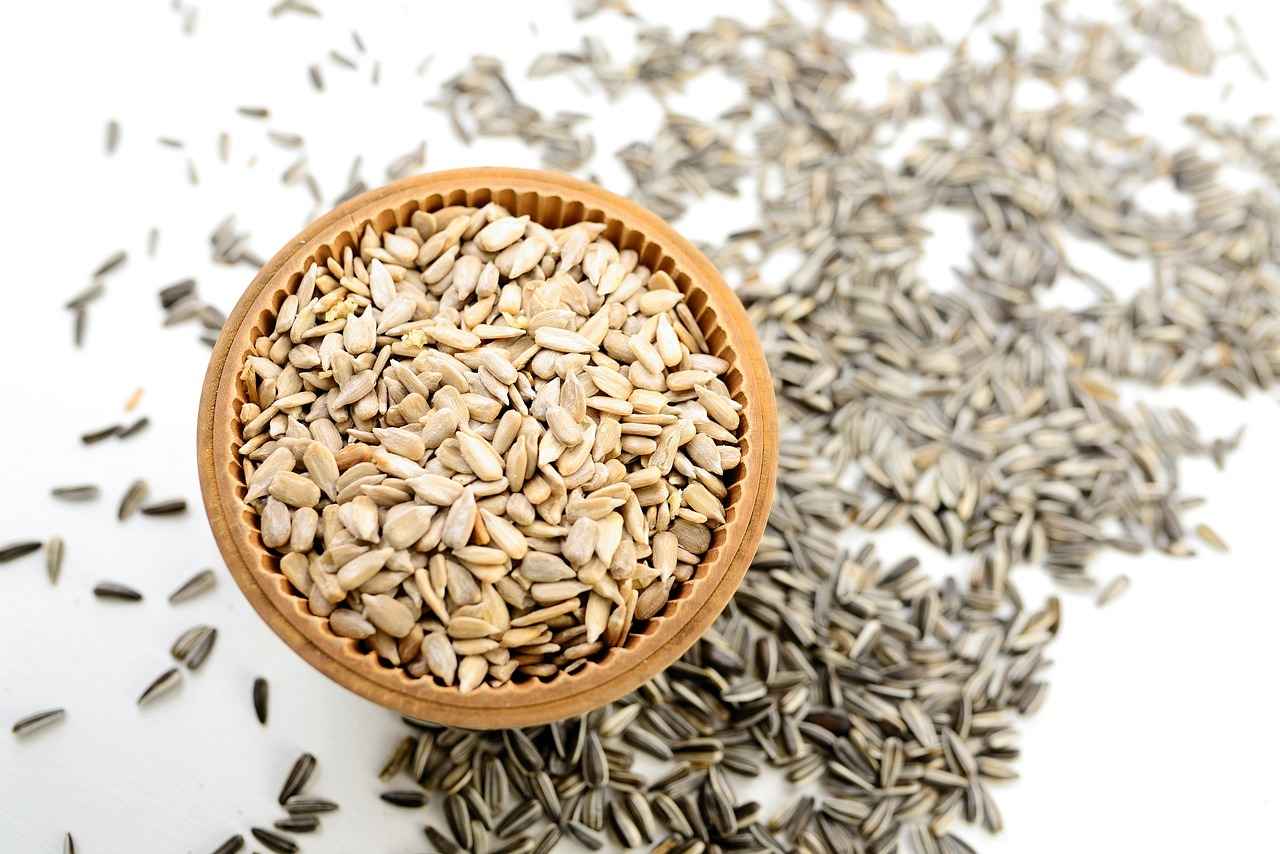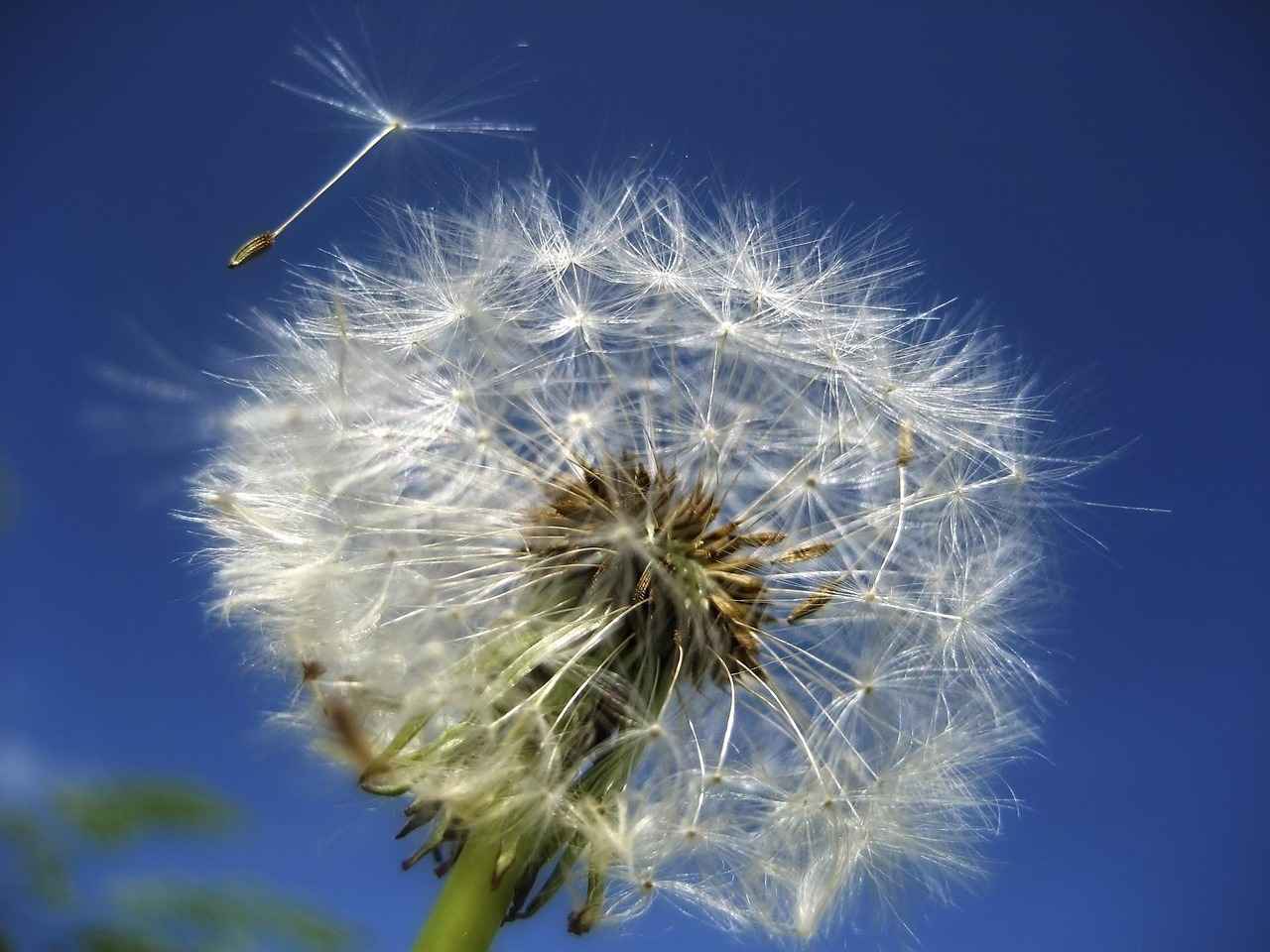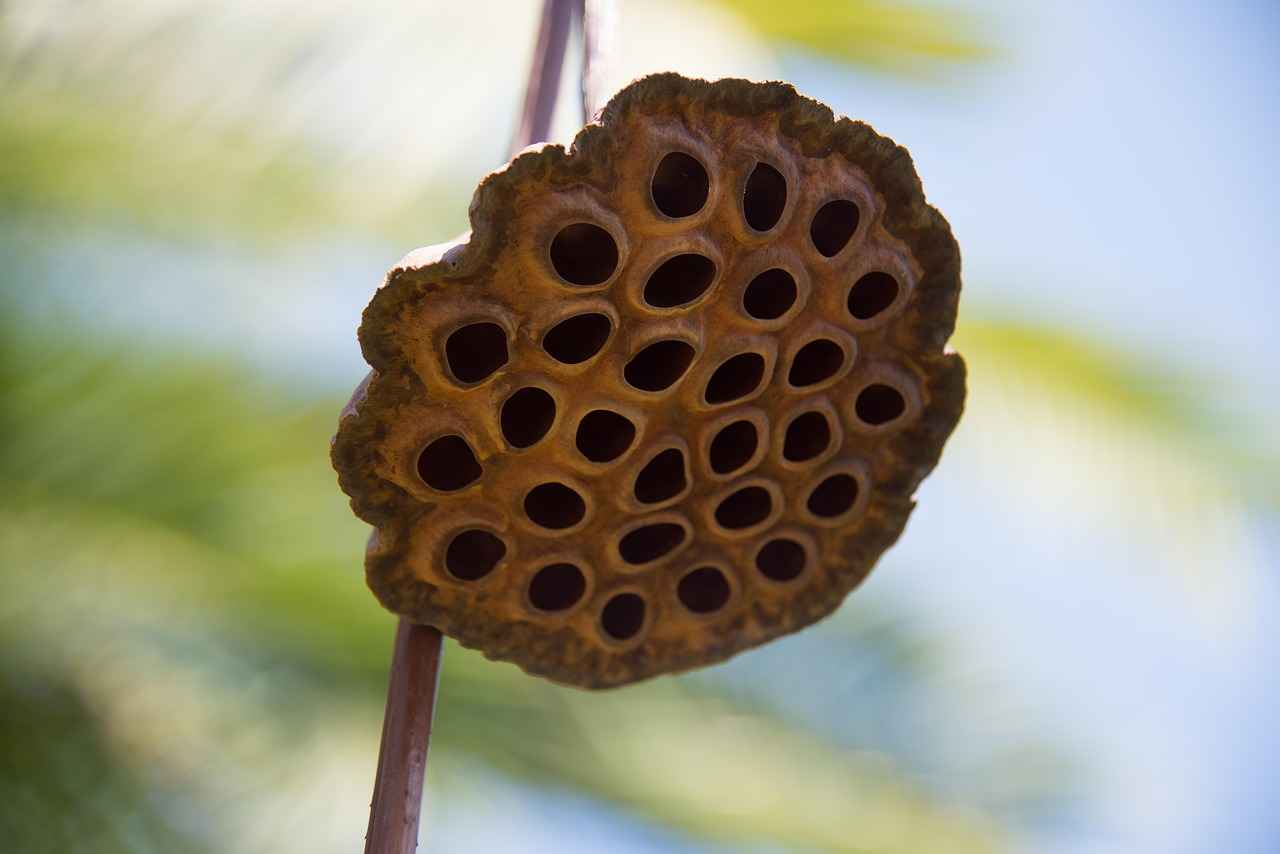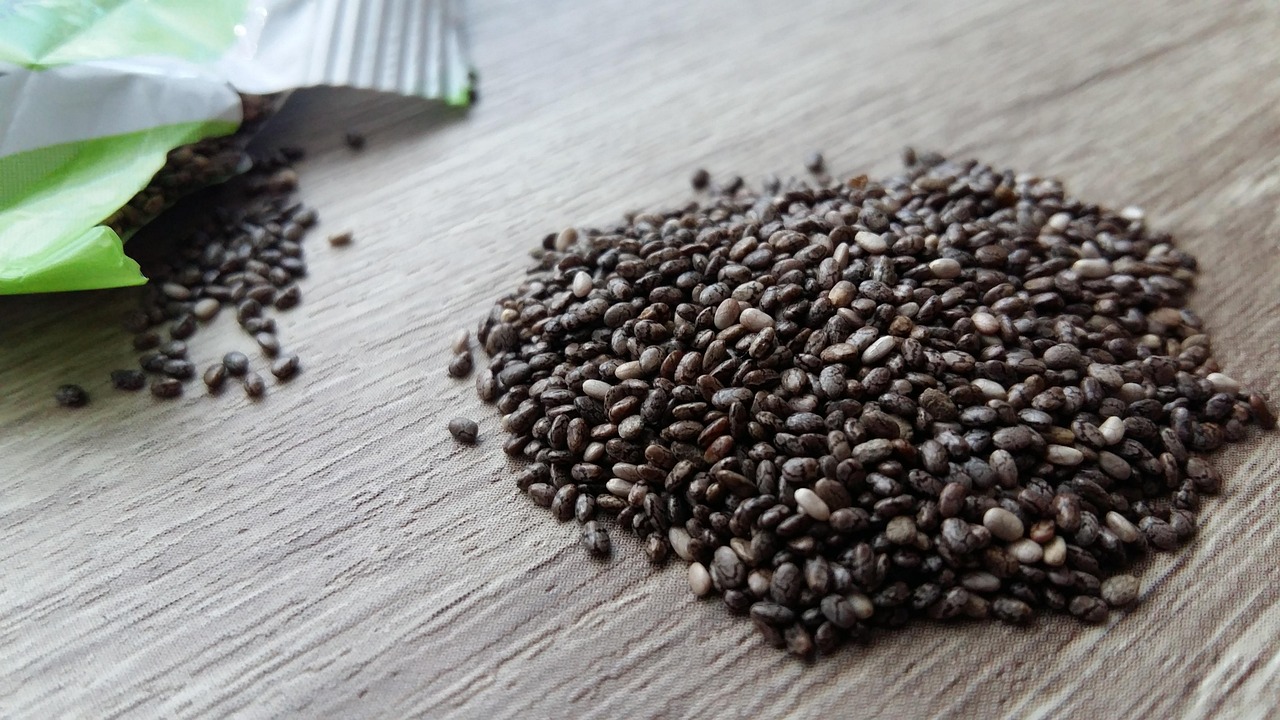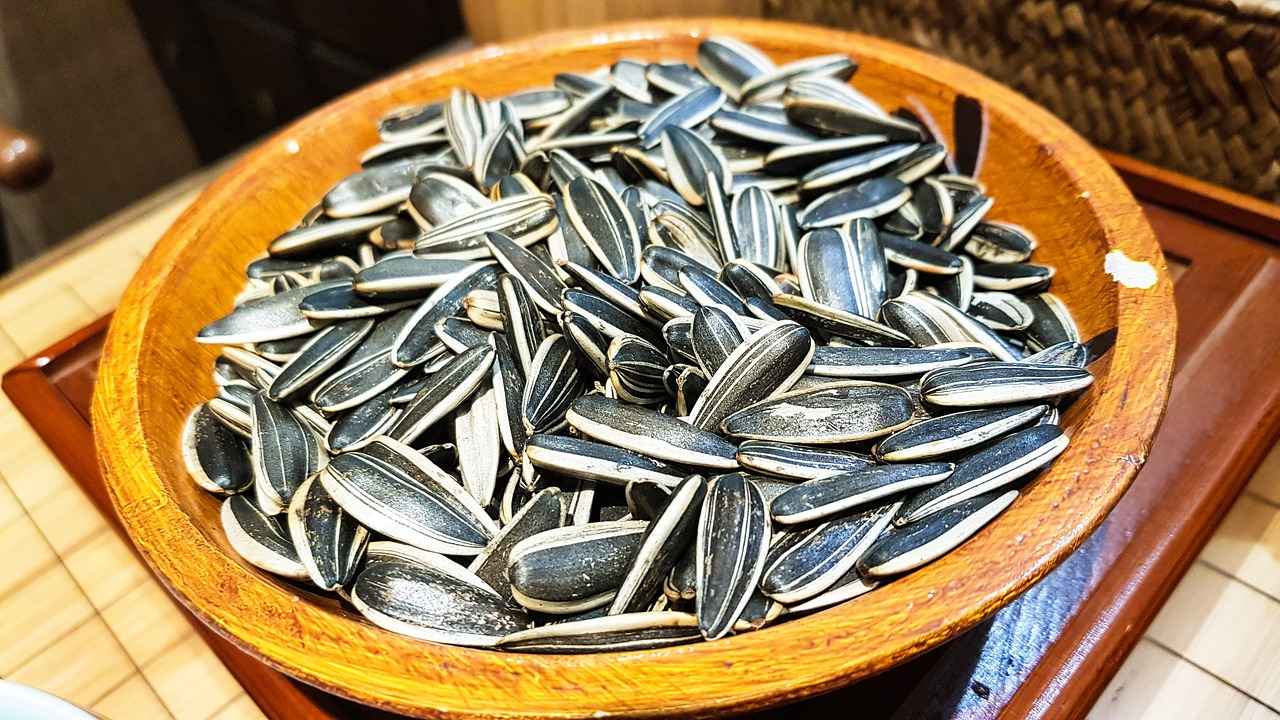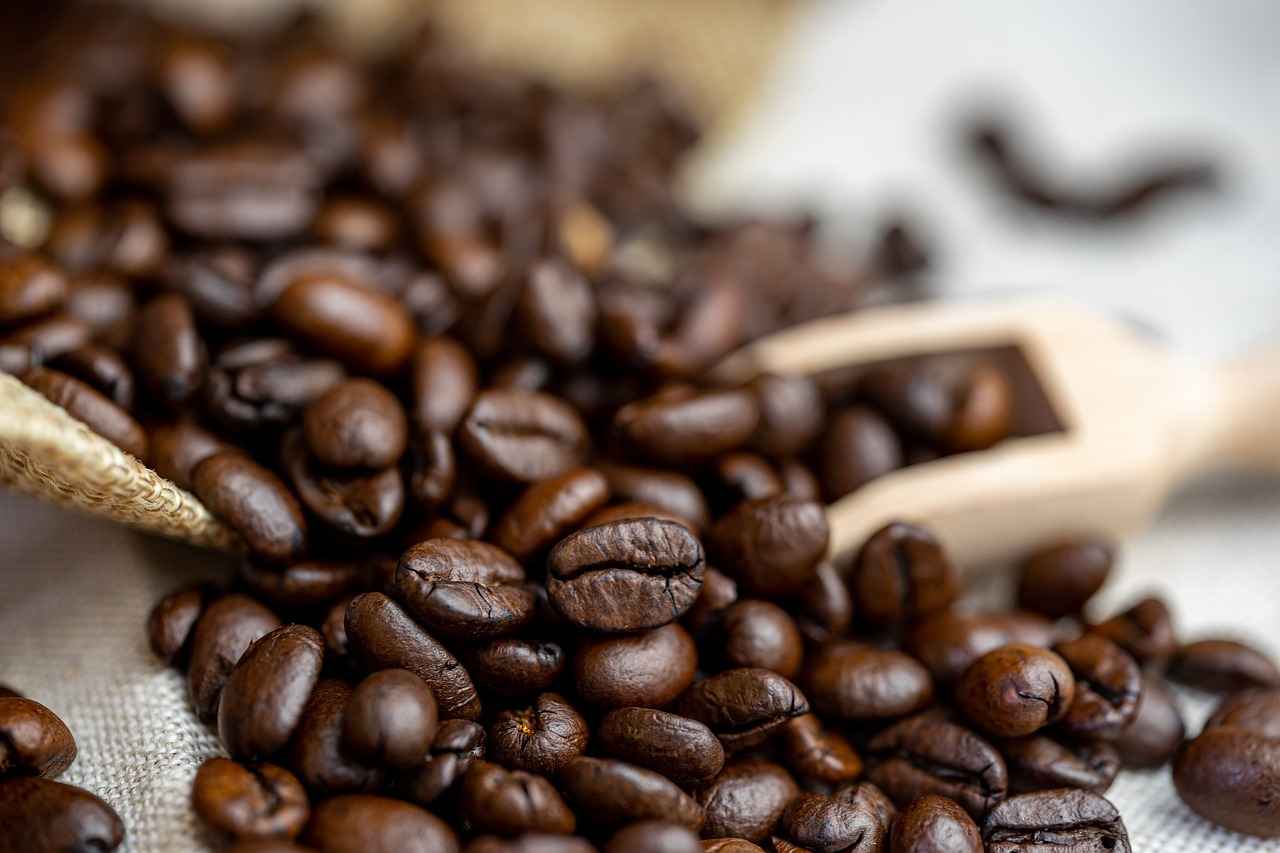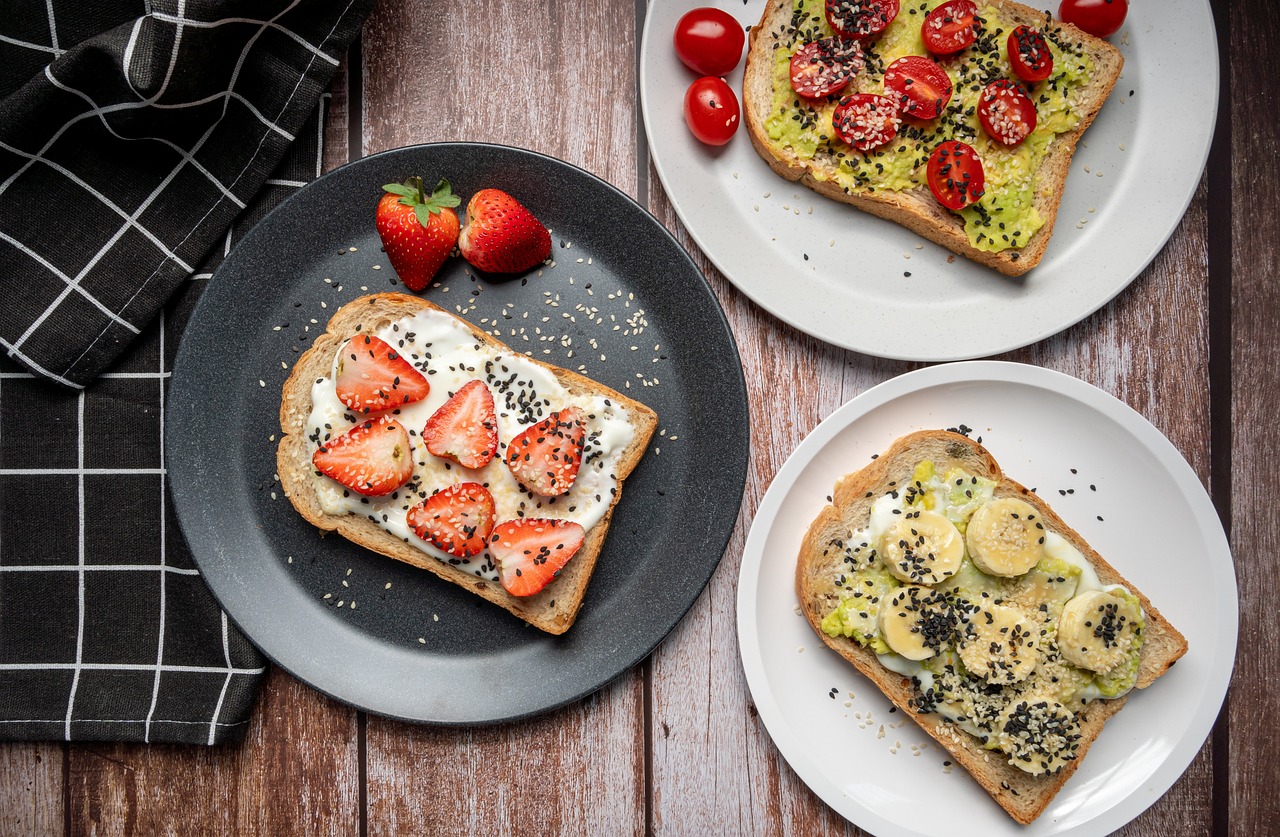This article explores the nutritional benefits, uses, and history of chia seeds, providing a comprehensive overview for those interested in incorporating this superfood into their diet.
What Are Chia Seeds?
Chia seeds are tiny, nutrient-dense seeds derived from the Salvia hispanica plant, native to Central America. These seeds are celebrated for their remarkable nutritional profile, which includes high levels of fiber, protein, and omega-3 fatty acids, making them a popular choice among health enthusiasts.
What Are the Nutritional Benefits of Chia Seeds?
- High Fiber Content: Chia seeds contain a significant amount of dietary fiber, which aids in digestion and promotes feelings of fullness.
- Rich in Omega-3 Fatty Acids: These seeds are an excellent source of plant-based omega-3s, essential for heart and brain health.
- Protein Source: Chia seeds provide a complete protein, making them an ideal addition for vegetarians and vegans.
High Fiber Content
Chia seeds are exceptionally rich in fiber, with about 10 grams per ounce. This high fiber content aids in digestion, promotes satiety, and helps stabilize blood sugar levels, contributing to overall health and wellness.
How Does Fiber Impact Digestive Health?
Fiber plays a crucial role in maintaining digestive health by preventing constipation and promoting regular bowel movements. Incorporating chia seeds into your diet can enhance gut health significantly.
Can Fiber Help with Weight Management?
Incorporating high-fiber foods like chia seeds can enhance feelings of fullness, potentially reducing overall calorie intake and supporting weight loss efforts.
How Can You Incorporate Chia Seeds Into Your Diet?
Chia seeds are incredibly versatile and can be easily added to various dishes:
- Chia Seed Pudding: A popular way to enjoy chia seeds, simply mix them with your choice of milk and let them sit to create a creamy texture.
- Add to Smoothies: Boost the nutritional profile of your smoothies by adding chia seeds, which add fiber and omega-3s without altering flavor.
What Are the Potential Side Effects of Chia Seeds?
While generally safe for most people, chia seeds can cause digestive issues if consumed in excessive amounts or without adequate hydration. Moderation is key.
Can Chia Seeds Cause Digestive Discomfort?
Some individuals may experience bloating or gas if they consume too many chia seeds too quickly, especially if they are not accustomed to a high-fiber diet.
Are There Any Allergic Reactions to Chia Seeds?
Though rare, allergic reactions to chia seeds can occur, particularly in individuals with known allergies to other seeds. It’s advisable to start with small amounts.
What Is the History of Chia Seeds?
Chia seeds have a rich history, dating back to ancient civilizations. They were a staple food source for the Aztecs and Mayans, valued for their nutritional properties.
How Were Chia Seeds Used by Ancient Cultures?
Ancient civilizations utilized chia seeds for their energy-boosting properties, often consuming them before battles or long journeys, showcasing their significance in historical diets.
Why Did Chia Seeds Decline in Popularity?
Despite their historical importance, chia seeds fell out of favor for centuries until their resurgence as a superfood in modern health trends, rediscovering their nutritional benefits.
Where to Buy Chia Seeds?
Chia seeds are widely available in health food stores, supermarkets, and online retailers. Look for organic, non-GMO varieties to ensure quality and avoid additives.
How to Store Chia Seeds for Maximum Freshness?
Proper storage of chia seeds in a cool, dry place helps maintain their freshness and nutritional value, ensuring you get the most out of this superfood.
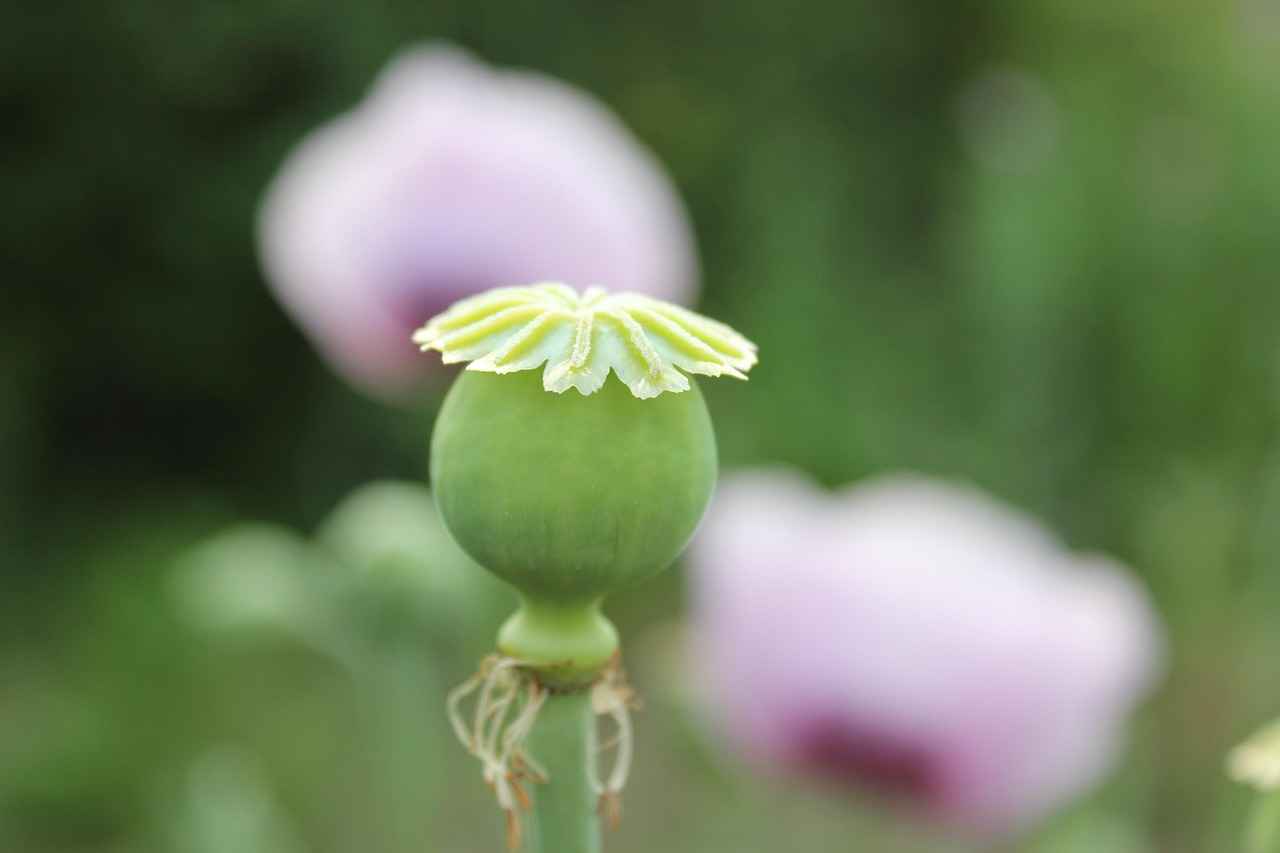
What Are Chia Seeds?
Chia seeds are small, flat, oval seeds that originate from the Salvia hispanica plant, which is native to Central America. These seeds have gained immense popularity in recent years, being hailed as a superfood due to their impressive nutrient profile. Not only are they rich in fiber, but they also boast high levels of protein, omega-3 fatty acids, and various essential minerals, making them a powerful addition to any diet.
Chia seeds are a nutritional powerhouse. Here are some of the key benefits:
- High Fiber Content: Chia seeds are composed of about 34% fiber, which helps in maintaining a healthy digestive system.
- Rich in Omega-3 Fatty Acids: They contain more omega-3s than salmon, supporting heart health and reducing inflammation.
- Excellent Source of Protein: With a complete amino acid profile, chia seeds are a great source of plant-based protein.
- Minerals and Antioxidants: Chia seeds are rich in calcium, magnesium, phosphorus, and antioxidants, which are crucial for overall health.
Incorporating chia seeds into your meals is easy and versatile. Here are some practical ways to enjoy them:
- Chia Seed Pudding: Mix chia seeds with your choice of milk or yogurt and let them soak overnight for a delicious breakfast.
- In Smoothies: Add a tablespoon of chia seeds to your smoothie for an extra boost of nutrients.
- Baking: Incorporate chia seeds into baked goods like muffins or bread for added texture and nutrition.
While chia seeds are generally safe for most people, it’s essential to consume them in moderation. Here are some potential side effects:
- Digestive Discomfort: Eating too many chia seeds at once can lead to bloating or gas, especially for those not accustomed to high-fiber diets.
- Allergic Reactions: Although rare, some individuals may experience allergic reactions. It’s advisable to consult a healthcare professional if you have known allergies to other seeds.
Chia seeds have a rich history that dates back to ancient civilizations. They were a staple food for the Aztecs and Mayans, who valued them for their energy-boosting properties. Historically, chia seeds were used during long journeys and battles, showcasing their significance in the diets of these cultures. However, their popularity waned for centuries until a resurgence in modern health trends brought them back into the spotlight.
Chia seeds are readily available in health food stores, supermarkets, and online retailers. When purchasing, look for organic and non-GMO varieties to ensure quality and maximize health benefits. Proper storage in a cool, dry place will help maintain their freshness and nutritional value.
In conclusion, chia seeds are a versatile and nutritious addition to any diet. With their rich history, numerous health benefits, and ease of incorporation into various dishes, they continue to be a popular choice for health-conscious individuals.
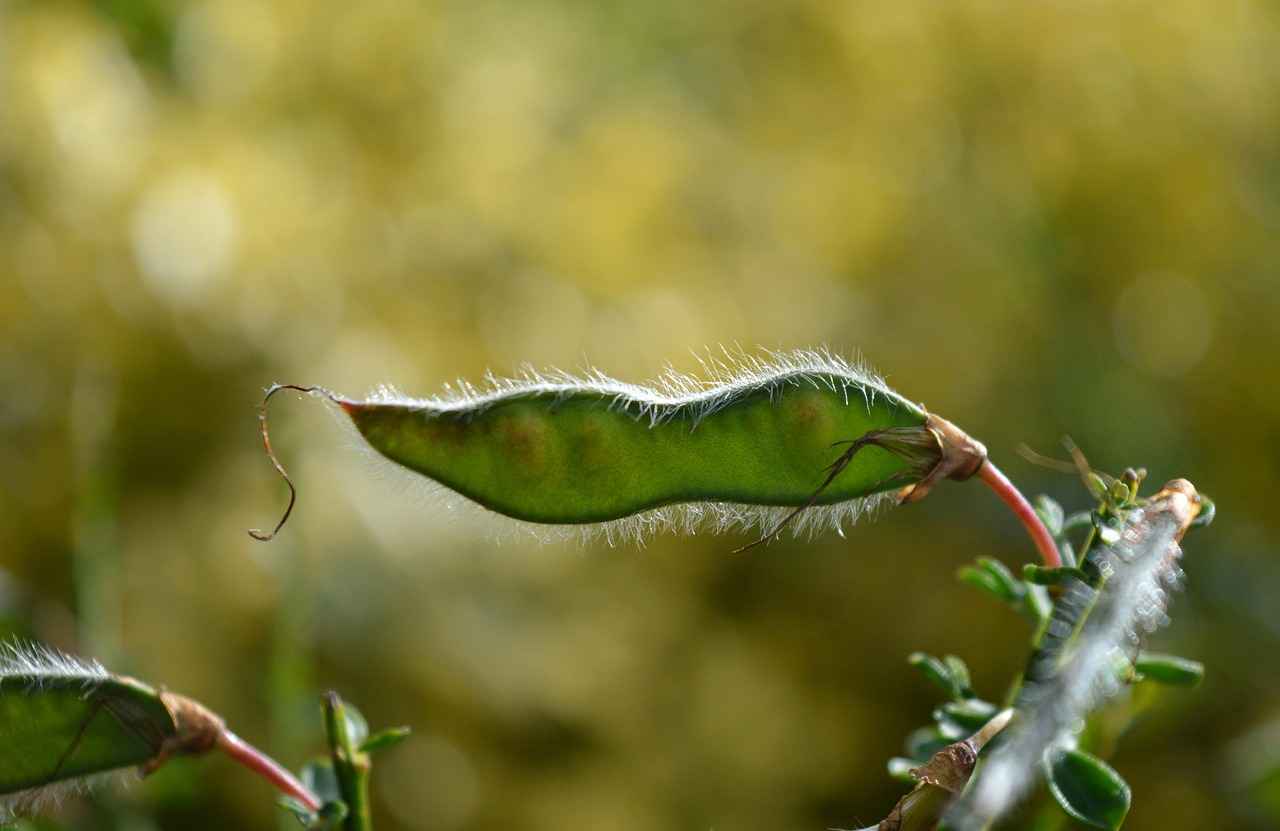
What Are the Nutritional Benefits of Chia Seeds?
Chia seeds, derived from the Salvia hispanica plant, are increasingly recognized as a superfood due to their incredible nutritional profile. These tiny seeds are packed with essential nutrients that can significantly enhance your overall health. In this article, we will explore the various nutritional benefits of chia seeds, making a case for their inclusion in a balanced diet.
Chia seeds are a powerhouse of nutrients, offering a myriad of health benefits. Here are some of the key advantages:
- High Fiber Content: Chia seeds are an excellent source of dietary fiber, with about 10 grams per ounce. This high fiber content aids in digestion, promotes a feeling of fullness, and helps regulate blood sugar levels.
- Rich in Omega-3 Fatty Acids: These seeds are one of the best plant-based sources of omega-3 fatty acids, which are crucial for heart health and reducing inflammation in the body.
- Protein Powerhouse: Chia seeds provide a complete protein, containing all nine essential amino acids, making them a great addition for vegetarians and vegans.
- Antioxidant Properties: Packed with antioxidants, chia seeds help combat oxidative stress and reduce inflammation, contributing to overall well-being.
- Bone Health: Chia seeds are rich in calcium, phosphorus, and magnesium, essential minerals that support bone health.
The high fiber content in chia seeds plays a crucial role in maintaining digestive health. Fiber aids in preventing constipation and promotes regular bowel movements. When chia seeds come into contact with liquid, they absorb it and expand, forming a gel-like substance that can help move food through the digestive tract more efficiently.
Chia seeds are particularly beneficial for heart health due to their high levels of omega-3 fatty acids. Omega-3s are known to lower blood pressure, reduce cholesterol levels, and decrease the risk of heart disease. Regular consumption of chia seeds can contribute to a healthier cardiovascular system.
Incorporating chia seeds into your diet can enhance feelings of fullness, which may lead to reduced calorie intake. The soluble fiber in chia seeds expands in your stomach, creating a sense of satiety. This can be particularly beneficial for those looking to manage their weight or reduce cravings.
Beyond digestion and heart health, chia seeds offer additional benefits:
- Blood Sugar Regulation: The fiber and protein content in chia seeds can help stabilize blood sugar levels, making them a smart choice for individuals with diabetes.
- Skin Health: The antioxidants in chia seeds can promote healthy skin by combating free radicals, which are known to cause skin aging.
- Energy Boost: Chia seeds are often used by athletes for their energy-boosting properties, providing sustained energy during workouts.
In summary, chia seeds are a nutrient-dense superfood that can provide numerous health benefits, including improved digestion, heart health, and weight management. Their versatility allows them to be easily incorporated into various dishes, making them an excellent addition to any diet.
High Fiber Content
Chia seeds have gained immense popularity in recent years due to their numerous health benefits, particularly their high fiber content. These tiny seeds are not only a powerhouse of nutrition but also play a crucial role in enhancing digestive health, promoting weight management, and stabilizing blood sugar levels.
Chia seeds are renowned for their remarkable fiber content, with one ounce (about two tablespoons) containing approximately 11 grams of dietary fiber. This high fiber content is significant because fiber is essential for maintaining a healthy digestive system.
Fiber is known for its ability to promote regular bowel movements and prevent constipation. When chia seeds are consumed, they absorb water and expand, forming a gel-like substance. This property not only helps to bulk up stool but also facilitates its passage through the intestines. The fiber in chia seeds acts as a prebiotic, feeding the beneficial bacteria in the gut, which is vital for overall digestive health.
Incorporating chia seeds into your diet can significantly enhance feelings of satiety. The gel-like consistency formed when chia seeds absorb liquid slows down the digestion process, which can help you feel full for longer periods. This makes chia seeds an excellent addition to meals and snacks for those looking to manage their weight. By reducing overall calorie intake, chia seeds can support weight loss efforts effectively.
The fiber in chia seeds also plays a crucial role in regulating blood sugar levels. By slowing the absorption of sugar into the bloodstream, chia seeds can help prevent spikes in blood glucose levels, making them a beneficial food choice for individuals with diabetes or those looking to maintain stable energy levels throughout the day.
- Heart Health: High fiber intake is associated with lower cholesterol levels and reduced risk of heart disease.
- Improved Gut Health: Fiber promotes a healthy gut microbiome, which is essential for overall health.
- Reduced Risk of Certain Diseases: A diet high in fiber is linked to a lower risk of developing conditions such as colorectal cancer.
Adding chia seeds to your diet is simple and versatile. They can be sprinkled on salads, blended into smoothies, or used as a thickening agent in soups and sauces. For those looking for a delicious way to enjoy chia seeds, chia pudding is a popular option. Just combine chia seeds with your choice of milk and let them sit overnight to create a creamy, nutritious dish.
While the benefits of fiber are numerous, it is essential to consume it in moderation. Increasing fiber intake too quickly can lead to digestive discomfort, including bloating and gas. It is advisable to gradually introduce chia seeds into your diet and ensure adequate hydration to mitigate these effects.
In summary, the high fiber content of chia seeds not only aids in digestion and promotes satiety but also contributes to better blood sugar control and overall health. By incorporating chia seeds into your daily meals, you can enjoy their numerous benefits while enhancing your nutritional intake.
How Does Fiber Impact Digestive Health?
Fiber is a vital component of a healthy diet, and its impact on digestive health is profound. One of the primary roles of fiber is to promote regular bowel movements, which is essential for preventing constipation. When fiber is consumed, it absorbs water and expands in the digestive tract, adding bulk to the stool. This bulkiness encourages the intestines to contract, facilitating the movement of waste through the digestive system.
Chia seeds, in particular, are an excellent source of dietary fiber. Just two tablespoons of chia seeds contain approximately 11 grams of fiber, which is about one-third of the recommended daily intake for adults. This high fiber content not only aids in digestion but also contributes to a feeling of fullness, which can help in managing weight. The soluble fiber in chia seeds forms a gel-like substance when mixed with water, further enhancing their ability to support digestive health.
Moreover, fiber plays a crucial role in maintaining a healthy gut microbiome. The fermentation of soluble fiber by gut bacteria produces short-chain fatty acids (SCFAs), which are beneficial for colon health. These SCFAs can reduce inflammation and provide energy to the cells lining the colon, thereby promoting overall gut health. A healthy gut microbiome is linked to numerous health benefits, including improved immune function and reduced risk of chronic diseases.
Incorporating chia seeds into the diet is an effective way to increase fiber intake. They can be easily added to smoothies, yogurt, or oatmeal, enhancing both texture and nutritional value. However, it is essential to consume chia seeds with adequate hydration. Due to their high fiber content, consuming them without sufficient liquid can lead to digestive discomfort such as bloating or gas.
What Are the Different Types of Fiber?
- Soluble Fiber: This type dissolves in water and forms a gel-like substance. It helps to slow digestion and can aid in lowering blood sugar levels.
- Insoluble Fiber: This type does not dissolve in water and adds bulk to the stool. It is essential for preventing constipation and promoting regularity.
Both types of fiber are important for digestive health, and chia seeds provide a balanced mix of both soluble and insoluble fiber. This combination not only aids in digestion but also helps in maintaining a healthy weight and reducing the risk of various diseases.
Can Fiber Help with Other Digestive Issues?
Beyond preventing constipation, fiber can also help with other digestive issues. For instance, individuals suffering from irritable bowel syndrome (IBS) may find relief by increasing their fiber intake gradually. However, it’s important to consult with a healthcare provider before making significant dietary changes, especially for those with pre-existing digestive conditions.
In summary, the impact of fiber on digestive health cannot be overstated. Chia seeds serve as a powerful ally in achieving optimal digestive function, thanks to their high fiber content and other beneficial nutrients. By incorporating chia seeds into your daily diet, you can support your digestive health and overall well-being.
Can Fiber Help with Weight Management?
In the quest for effective weight management, the role of dietary fiber cannot be overstated. Fiber-rich foods, such as chia seeds, not only contribute to overall health but also play a significant role in controlling appetite and aiding weight loss efforts. This article delves into how fiber functions in the body and its impact on weight management.
Fiber is a type of carbohydrate that the body cannot digest. Instead of breaking down, it passes through the digestive system, providing a range of health benefits. One of the most significant advantages of consuming fiber is its ability to enhance feelings of fullness, or satiation. This satiety effect can lead to a reduction in overall calorie intake, which is crucial for those looking to lose weight.
When you consume high-fiber foods like chia seeds, they absorb water and expand in your stomach. This expansion increases the volume of food in the digestive tract, sending signals to your brain that you are full. As a result, you may find yourself eating less during meals, which can help create a calorie deficit essential for weight loss.
- Soluble Fiber: Found in foods like chia seeds, oats, and fruits, soluble fiber dissolves in water and forms a gel-like substance. This type of fiber slows down digestion and helps regulate blood sugar levels.
- Insoluble Fiber: Present in whole grains, nuts, and vegetables, insoluble fiber adds bulk to the stool and aids in regular bowel movements, promoting digestive health.
Chia seeds are particularly notable for their high fiber content, with approximately 11 grams of fiber per ounce. This makes them an excellent choice for those looking to increase their fiber intake. Incorporating chia seeds into your diet can help you meet the recommended daily fiber intake of 25 grams for women and 38 grams for men.
Adding chia seeds to your meals can be simple and delicious. Here are some practical tips:
- Chia Pudding: Mix chia seeds with your choice of milk or yogurt and let them sit overnight to create a creamy pudding.
- Smoothies: Blend chia seeds into your favorite smoothie for an extra fiber boost without altering the flavor.
- Baking: Incorporate chia seeds into baked goods like muffins or bread for added texture and nutrition.
While chia seeds are beneficial, it’s essential to consume them with adequate hydration. Since they absorb water, failing to drink enough fluids may lead to digestive discomfort. Additionally, those new to a high-fiber diet should gradually increase their fiber intake to avoid bloating or gas.
Incorporating high-fiber foods like chia seeds into your diet can significantly enhance feelings of fullness, potentially reducing overall calorie intake and supporting weight loss efforts. By understanding the role of fiber and implementing practical strategies to include chia seeds in your meals, you can take meaningful steps towards achieving your weight management goals.
Rich in Omega-3 Fatty Acids
are one of the standout features of chia seeds, making them a sought-after superfood in today’s health-conscious society. These tiny seeds, derived from the Salvia hispanica plant, are packed with essential nutrients that can significantly benefit overall health.
Omega-3 fatty acids, particularly alpha-linolenic acid (ALA)brain function and reducing inflammation throughout the body. Unlike omega-6 fatty acids, which are prevalent in many diets, omega-3s are often under-consumed, making chia seeds an excellent source to help balance this ratio.
The brain is composed of nearly 60% fat, and a significant portion of this fat is made up of omega-3 fatty acids. Studies suggest that adequate omega-3 intake can enhance cognitive function, improve memory, and potentially reduce the risk of neurodegenerative diseases such as Alzheimer’s. Chia seeds offer a plant-based alternative for those seeking to increase their omega-3 levels without relying on fish or fish oil supplements.
Chronic inflammation is linked to various health issues, including heart disease, diabetes, and arthritis. Omega-3 fatty acids have been shown to possess anti-inflammatory properties, which can help mitigate these risks. Incorporating chia seeds into your diet may assist in reducing systemic inflammation, promoting better overall health.
Just one ounce (about 28 grams) of chia seeds contains approximately 5 grams of ALA, making them one of the richest plant sources of omega-3 fatty acids. This makes it easy to incorporate chia seeds into your daily routine to meet your omega-3 needs.
- Smoothies: Blend chia seeds into your favorite smoothies for a nutrient boost.
- Puddings: Create delicious chia seed puddings by soaking the seeds in almond milk or coconut milk.
- Baking: Add them to baked goods like muffins or bread for added texture and nutrition.
- Salads: Sprinkle chia seeds on salads to enhance both flavor and nutritional value.
While chia seeds are generally safe for most people, consuming them in excessive amounts without adequate hydration can lead to digestive issues. It’s essential to introduce them gradually into your diet and drink plenty of water to avoid any discomfort.
In addition to being rich in omega-3 fatty acids, chia seeds are also an excellent source of fiber, protein, and various essential minerals such as calcium, magnesium, and phosphorus. This combination of nutrients makes them a powerhouse for promoting overall health.
In summary, chia seeds are an exceptional source of plant-based omega-3 fatty acids that contribute significantly to brain health and inflammation reduction. Their versatility allows for easy incorporation into a variety of dishes, making them a valuable addition to any diet.
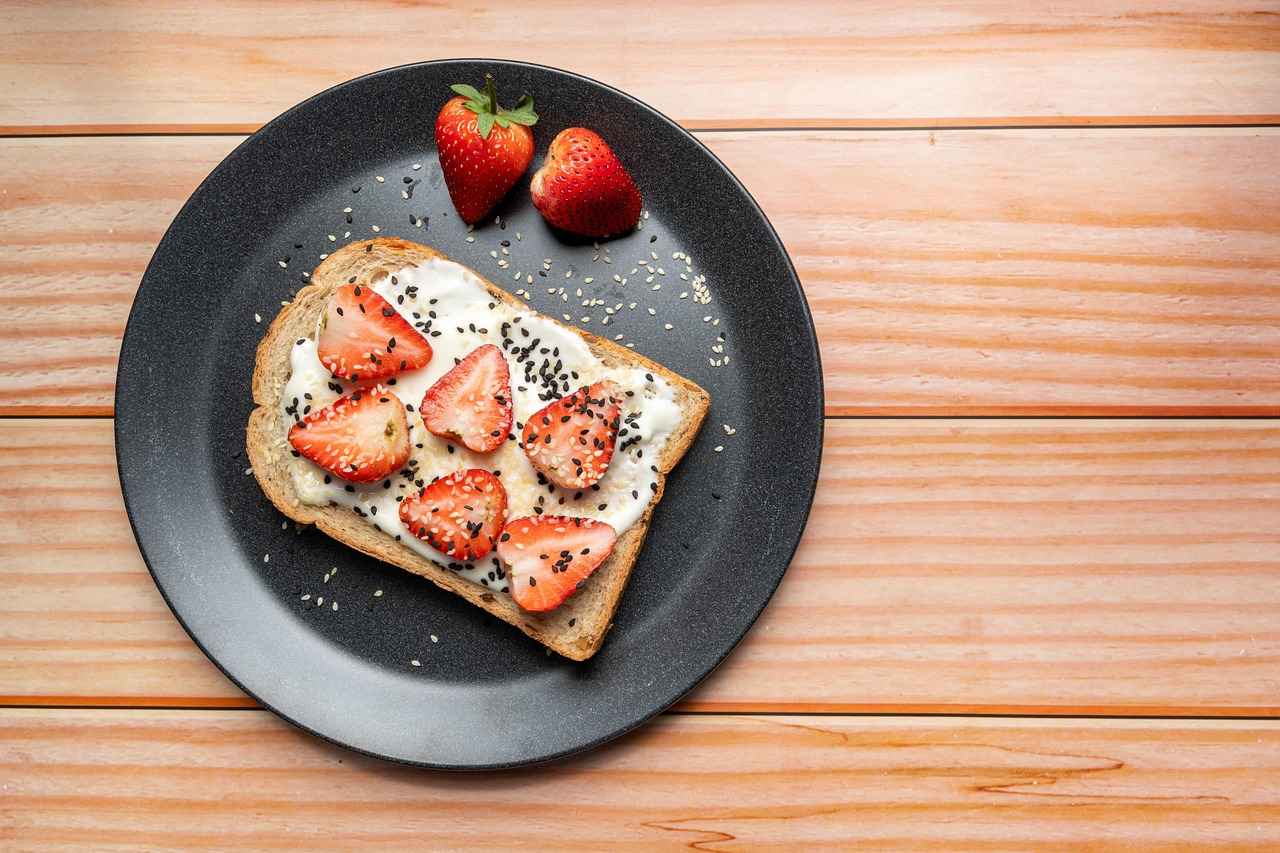
How Can You Incorporate Chia Seeds Into Your Diet?
Chia seeds are not only a nutritional powerhouse but also incredibly versatile, allowing for easy incorporation into various meals and snacks. This adaptability makes them a favorite among health enthusiasts looking to enhance their diets with minimal effort. Below are several creative and practical ways to add chia seeds to your daily meals.
- Smoothies: One of the simplest ways to include chia seeds in your diet is by adding them to smoothies. Just a tablespoon or two can significantly boost the fiber and omega-3 fatty acid content of your drink without altering its flavor. Blend them in with fruits, vegetables, and your choice of liquid for a nutritious start to your day.
- Yogurt or Oatmeal: Sprinkle chia seeds on top of your morning yogurt or mix them into oatmeal. They not only add a delightful crunch but also enhance the nutritional profile of your breakfast, making it more filling and satisfying.
- Baked Goods: Chia seeds can be easily incorporated into baked goods like muffins, bread, or pancakes. They can replace eggs in vegan recipes or simply add an extra layer of texture and nutrients. Consider adding them to your favorite recipes for a healthy twist.
- Chia Seed Pudding: This is a popular and delicious way to enjoy chia seeds. Combine chia seeds with milk or a milk alternative, sweeten with honey or maple syrup, and let it sit overnight. The seeds absorb the liquid, creating a creamy and satisfying pudding that can be topped with fruits and nuts.
- Salads: For a crunchy topping, sprinkle chia seeds over salads. They add a nutty flavor and a boost of protein and fiber, helping to keep you full longer.
- Soups and Stews: Add chia seeds to soups or stews as a thickening agent. They absorb liquid and create a more substantial texture, making your meals heartier and more satisfying.
Yes, chia seeds can serve as an excellent thickening agent due to their ability to absorb liquid. When mixed with water or other liquids, they swell and form a gel-like consistency. This property makes them ideal for creating sauces, dressings, and even smoothies that need a thicker texture. Simply mix chia seeds with the liquid of your choice and allow them to sit for a few minutes until they reach the desired thickness.
For optimal digestion and nutrient absorption, it is advisable to soak chia seeds before consumption. Soaking them in water or any liquid allows them to expand and release their nutrients more effectively. This process also makes them easier to digest, reducing the risk of any potential digestive discomfort. Aim to soak chia seeds for at least 20 minutes, or overnight for best results.
Exploring creative recipes can make incorporating chia seeds into your diet even more enjoyable. Here are a few ideas:
- Chia Seed Jam: Combine mashed fruit with chia seeds and a sweetener of your choice. Let it sit for a few hours, and you’ll have a delicious and healthy jam.
- Energy Bites: Mix chia seeds with oats, nut butter, honey, and dark chocolate chips. Roll them into balls for a quick and nutritious snack.
- Chia Seed Granola: Add chia seeds to your homemade granola recipes for added crunch and nutrition.
By creatively incorporating chia seeds into your diet, you can enjoy their numerous health benefits while enhancing the flavor and texture of your meals. Whether you are looking for a quick snack or a nutritious addition to your meals, chia seeds are a fantastic option that can easily fit into any dietary routine.
Chia Seed Pudding Recipes
Chia seed pudding has become a beloved treat among health enthusiasts, and for good reason. This delightful dish not only offers a unique texture but also packs a powerful nutritional punch. By soaking chia seeds in liquid, they absorb moisture and swell, creating a creamy and satisfying pudding that can serve as both a nutritious breakfast or a fulfilling snack.
Chia seeds are rich in nutrients, including fiber, protein, and omega-3 fatty acids. When transformed into pudding, they become an easy and enjoyable way to incorporate these superfoods into your diet. The pudding can be customized with various flavors and toppings, making it a versatile option for anyone looking to enhance their meals.
To create a simple chia seed pudding, you will need:
- 1/4 cup chia seeds
- 1 cup of your choice of milk (almond, coconut, dairy, etc.)
- 1-2 tablespoons sweetener (honey, maple syrup, or agave)
- 1 teaspoon vanilla extract (optional)
Combine all ingredients in a bowl or jar, stirring well to prevent clumping. Cover and refrigerate for at least 2 hours or overnight. The result will be a deliciously thick pudding ready for your favorite toppings!
One of the best aspects of chia seed pudding is its ability to adapt to different flavors. Here are a few popular variations:
- Chocolate Chia Seed Pudding: Add 2 tablespoons of cocoa powder for a rich, chocolatey treat.
- Berry Bliss: Mix in fresh or frozen berries for a fruity twist.
- Coconut Delight: Use coconut milk and top with shredded coconut for a tropical flavor.
In addition to being a tasty option, chia seed pudding offers numerous health benefits:
- High in Fiber: Supports digestive health and helps maintain a feeling of fullness.
- Rich in Antioxidants: Protects the body from oxidative stress.
- Omega-3 Fatty Acids: Essential for brain health and reducing inflammation.
Chia seed pudding can be served in various ways. Here are a few ideas:
- Layer it in a parfait with granola and fruits for a visually appealing breakfast.
- Use it as a filling for crepes or as a topping for pancakes.
- Enjoy it on its own as a quick snack or dessert.
To ensure your chia seed pudding turns out perfectly every time, consider these tips:
- Experiment with different liquids, including nut milks, dairy, or even fruit juices.
- Adjust the sweetness to your liking; start with less and add more if needed.
- For a smoother texture, blend the mixture before refrigerating.
By incorporating chia seed pudding into your diet, you can enjoy a delicious and nutritious dish that supports your health goals. With endless flavor possibilities and easy preparation, it’s no wonder this pudding has gained such popularity.
Adding Chia Seeds to Smoothies
In the world of nutrition, chia seeds have gained significant attention for their impressive health benefits. One of the simplest and most effective ways to incorporate these tiny powerhouses into your diet is by adding them to smoothies. This section delves into the myriad advantages of blending chia seeds into your favorite smoothie recipes.
Chia seeds are a fantastic addition to smoothies for several reasons:
- Nutritional Boost: They are packed with essential nutrients, including fiber, protein, and omega-3 fatty acids.
- Texture Enhancement: Chia seeds absorb liquid and swell, adding a unique texture to your smoothies.
- Flavor Neutrality: They have a mild flavor that does not overpower the taste of your smoothie.
Incorporating chia seeds into your smoothies not only enhances their taste but also significantly boosts their nutritional profile. Here are some key health benefits:
- High Fiber Content: Chia seeds are rich in dietary fiber, which aids in digestion and promotes satiety, helping you feel fuller for longer.
- Omega-3 Fatty Acids: These essential fatty acids are crucial for heart health and reducing inflammation, making chia seeds a heart-friendly option.
- Protein Source: They provide a plant-based protein source, making them ideal for vegans and vegetarians looking to increase their protein intake.
Incorporating chia seeds into your smoothies is incredibly easy. Here are some practical tips:
- Start Small: If you’re new to chia seeds, start with a teaspoon and gradually increase to one or two tablespoons as you become accustomed to their texture.
- Soak Them First: Soaking chia seeds in water or your smoothie base for 10-15 minutes can help them expand and create a gel-like consistency, enhancing the smoothie’s texture.
- Add to Blending: Simply toss them into your blender with your other ingredients. They will blend seamlessly and add nutritional value without altering the flavor.
Here are a couple of tasty smoothie recipes that highlight the versatility of chia seeds:
1. Berry Chia Smoothie: - 1 cup mixed berries (fresh or frozen) - 1 banana - 1 cup almond milk - 1 tablespoon chia seeds - Blend until smooth and enjoy!2. Green Chia Smoothie: - 1 cup spinach - 1/2 avocado - 1 cup coconut water - 1 tablespoon chia seeds - Blend until creamy and refreshing!
While chia seeds are generally safe for most individuals, it’s essential to consume them in moderation. Here are a few points to keep in mind:
- Hydration: Chia seeds absorb a significant amount of liquid, so it’s vital to drink plenty of water to prevent digestive discomfort.
- Allergic Reactions: Although rare, some people may have allergies to chia seeds, so it’s advisable to start with small amounts if you are trying them for the first time.
Incorporating chia seeds into your smoothies is a simple yet effective way to enhance your diet. With their numerous health benefits and versatility, they are a must-try for anyone looking to boost their nutritional intake.
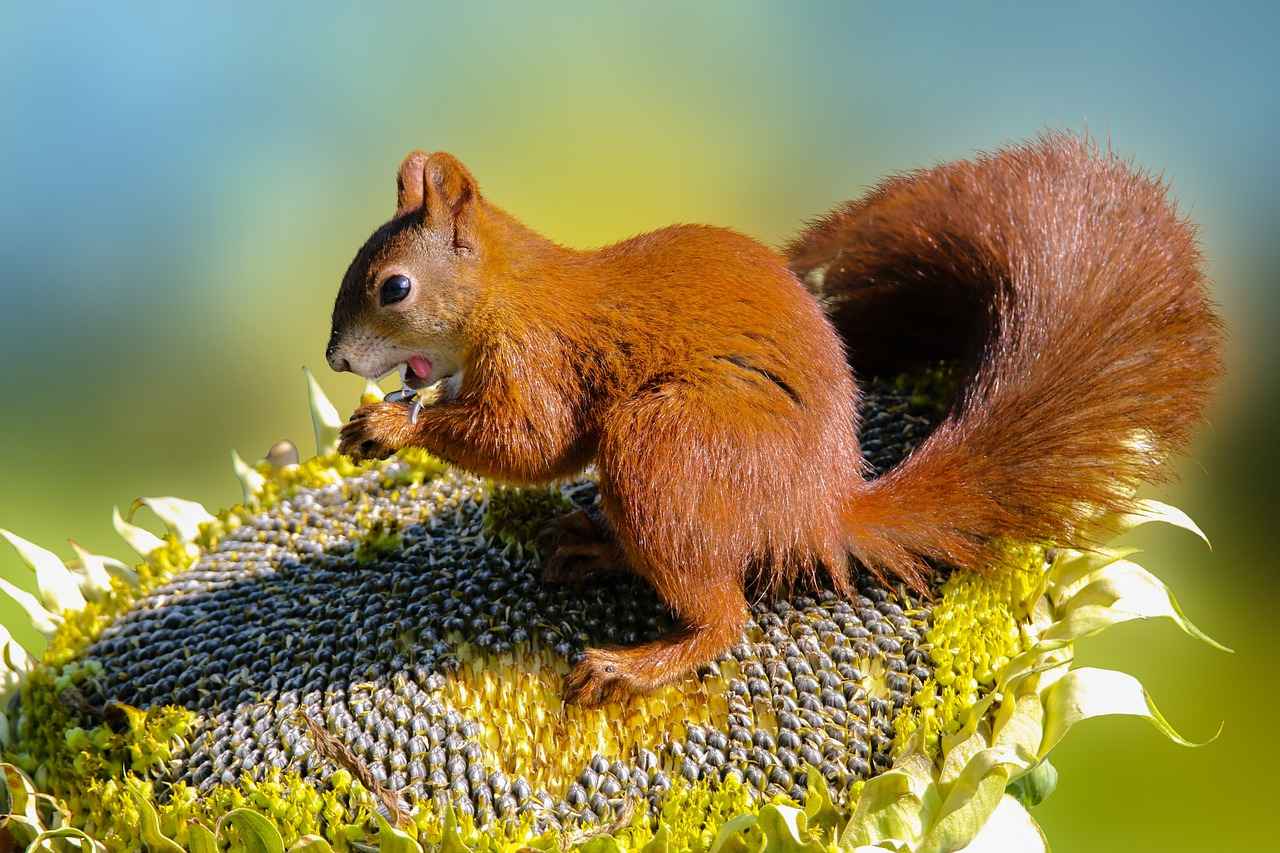
What Are the Potential Side Effects of Chia Seeds?
Chia seeds have gained immense popularity as a superfood, celebrated for their numerous health benefits. However, like any food, they can pose potential side effects, especially when consumed improperly. Understanding these side effects is essential for anyone looking to incorporate chia seeds into their diet.
While chia seeds are generally safe for most individuals, they can lead to digestive issues if consumed in excessive amounts or without adequate hydration. This is primarily due to their high fiber content, which can be overwhelming for those not accustomed to a fiber-rich diet. Some people may experience symptoms such as bloating, gas, or even constipation if they suddenly increase their chia seed intake.
Moderation is key when it comes to chia seeds. A typical serving size is about 1-2 tablespoons per day. This amount provides a good balance of nutrients without overwhelming your digestive system. It’s crucial to gradually introduce chia seeds into your diet, allowing your body to adapt to the increased fiber intake.
Chia seeds can absorb up to 12 times their weight in water. If consumed dry or without sufficient fluids, they can expand in the digestive tract, potentially leading to discomfort or even blockages. To avoid this, it’s advisable to soak chia seeds in water, juice, or milk before consumption, which not only helps with digestion but also enhances their nutritional benefits.
Although rare, some individuals may experience allergic reactions to chia seeds. Symptoms can range from mild to severe and may include itching, swelling, or difficulty breathing. Those with known allergies to other seeds, such as sesame or flaxseed, should exercise caution when trying chia seeds for the first time.
Chia seeds may also interact with certain medications, particularly those affecting blood sugar levels or blood pressure. Due to their ability to lower blood sugar, individuals on diabetes medications should consult with a healthcare professional before significantly increasing their chia seed intake. Similarly, those taking anticoagulants should be cautious, as chia seeds can enhance blood-thinning effects.
Over time, excessive consumption of chia seeds can lead to chronic digestive issues, including gastrointestinal discomfort and potential nutrient malabsorption due to the overwhelming fiber load. It’s essential to maintain a balanced diet and not rely solely on chia seeds for nutrition.
- Start Small: Begin with a small amount, gradually increasing as your body adjusts.
- Stay Hydrated: Always consume chia seeds with plenty of fluids to aid digestion.
- Incorporate into Meals: Add soaked chia seeds to smoothies, oatmeal, or yogurt for a nutritious boost.
- Consult a Professional: If unsure about adding chia seeds to your diet, consult a healthcare provider.
In conclusion, while chia seeds offer numerous health benefits, it’s vital to consume them mindfully. By understanding their potential side effects and adhering to recommended serving sizes, you can enjoy this superfood without adverse effects.
Can Chia Seeds Cause Digestive Discomfort?
Chia seeds have gained immense popularity as a superfood, celebrated for their numerous health benefits. However, as with any food, moderation is key, particularly when it comes to their consumption. One common concern among new chia seed users is whether these tiny seeds can lead to digestive discomfort.
Chia seeds are rich in dietary fiber, with a single ounce providing about 11 grams. This high fiber content can be beneficial for digestive health, promoting regular bowel movements and preventing constipation. However, for individuals who are not accustomed to a high-fiber diet, suddenly introducing chia seeds in large quantities can lead to digestive issues.
When consumed in excess or without adequate hydration, chia seeds can absorb a significant amount of water—up to 12 times their weight. This absorption can lead to bloating or gas, particularly if the body is not used to processing such a high fiber intake. It is essential to gradually increase the amount of chia seeds in your diet to allow your digestive system to adjust.
- Start Slow: Begin with a small amount, such as one teaspoon, and gradually increase the quantity over several days.
- Stay Hydrated: Drink plenty of water throughout the day to help the fiber move through your digestive system effectively.
- Mix with Other Foods: Combine chia seeds with foods that are also high in water content, like yogurt or smoothies, to help with digestion.
If you experience symptoms such as bloating, gas, or abdominal discomfort after consuming chia seeds, it may be a sign that you have consumed too many too quickly. Listening to your body is crucial; if discomfort persists, consider reducing your intake or consulting with a healthcare professional.
While digestive discomfort is the most common issue, some individuals may also experience allergic reactions to chia seeds, although this is rare. Symptoms of an allergy can include rash, itching, or difficulty breathing. If you have a history of allergies to other seeds, it is advisable to proceed with caution.
Chia seeds can be a valuable addition to your diet, offering numerous health benefits when consumed correctly. By being mindful of your intake and listening to your body’s signals, you can enjoy the nutritional advantages of chia seeds without the discomfort. Remember, moderation and hydration are your best allies when incorporating this superfood into your meals.
Are There Any Allergic Reactions to Chia Seeds?
Chia seeds have gained immense popularity in recent years due to their numerous health benefits and versatility in various recipes. However, as with any food, it is essential to be aware of potential allergic reactions that some individuals may experience. This article delves into the possibility of allergic reactions to chia seeds, the symptoms to watch for, and precautions to take.
Though rare, allergic reactions to chia seeds can occur. Individuals with known allergies to other seeds, such as sesame or flaxseed, should approach chia seeds with caution. The proteins in chia seeds may trigger an immune response in sensitive individuals, leading to various allergic symptoms.
Allergic reactions can manifest in various ways. Common symptoms include:
- Skin Reactions: Hives, rashes, or eczema may develop after consuming chia seeds.
- Gastrointestinal Issues: Nausea, vomiting, or abdominal cramps can occur as the body reacts to the allergen.
- Respiratory Problems: Some individuals may experience difficulty breathing, wheezing, or nasal congestion.
- Anaphylaxis: In severe cases, an allergic reaction can lead to anaphylaxis, a life-threatening condition requiring immediate medical attention.
Individuals with a history of food allergies, particularly to seeds, nuts, or legumes, are at a higher risk of developing an allergy to chia seeds. It is crucial for these individuals to consult with a healthcare professional before introducing chia seeds into their diet.
If you are considering adding chia seeds to your diet, it is advisable to take the following precautions:
- Start with a Small Amount: Begin with a small quantity to monitor for any adverse reactions.
- Consult a Healthcare Professional: If you have a history of allergies, speak to a doctor or allergist before trying chia seeds.
- Be Aware of Cross-Contamination: Ensure that the chia seeds you purchase are processed in a facility that does not handle other allergens.
If you suspect you are having an allergic reaction to chia seeds, it is essential to take immediate action:
- Stop Consumption: Discontinue eating chia seeds and any products containing them.
- Seek Medical Attention: If symptoms are severe or if you experience difficulty breathing, call emergency services immediately.
- Keep an Allergy Action Plan: If you have known allergies, maintain an action plan that includes medications like antihistamines or an epinephrine auto-injector.
While chia seeds offer numerous health benefits, it is crucial to be aware of the potential for allergic reactions, especially for those with existing seed allergies. By taking the necessary precautions and being informed about the symptoms, individuals can safely enjoy the nutritional advantages of chia seeds while minimizing the risk of adverse reactions.
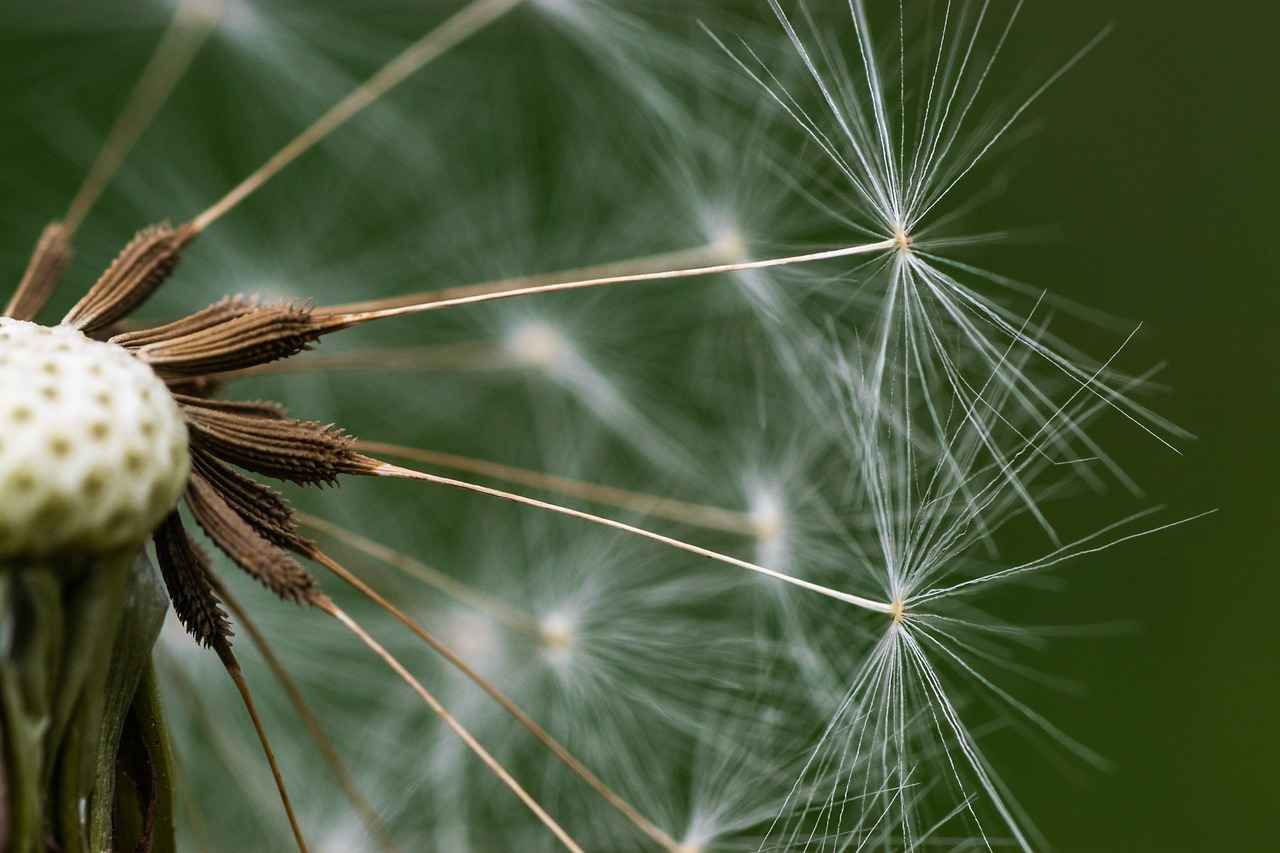
What Is the History of Chia Seeds?
Chia seeds boast a fascinating history that spans thousands of years, rooted deeply in the cultures of ancient civilizations. These tiny seeds, derived from the Salvia hispanica plant, were not only a vital food source but also held significant cultural and spiritual value among the Aztecs and Mayans. This article delves into the historical significance of chia seeds, their uses in ancient times, and their journey to modern-day popularity.
In the ancient Aztec and Mayan cultures, chia seeds were regarded as a superfood. They were consumed for their energy-boosting properties, with warriors often eating them before battles to enhance their stamina and endurance. The term “chia” itself comes from the Mayan word for “strength.” These seeds were so highly valued that they were sometimes used as currency, traded alongside precious metals.
- Food Source: Chia seeds were a staple in the diets of these civilizations, often ground into flour or mixed with water to create a gel-like substance. This gel was not only nutritious but also served as a hydrating agent during long journeys.
- Medicinal Uses: Ancient cultures believed in the healing properties of chia seeds. They were used to treat various ailments, providing relief from digestive issues, inflammation, and even skin conditions.
- Spiritual Significance: Chia seeds were often included in religious rituals and offerings, symbolizing fertility and abundance.
Despite their historical importance, chia seeds experienced a significant decline in usage following the Spanish conquest in the 16th century. The introduction of European crops and the suppression of indigenous practices led to a decrease in the cultivation and consumption of chia seeds. For centuries, they remained largely forgotten, overshadowed by other grains like wheat and corn.
The revival of chia seeds began in the late 20th century, fueled by a growing interest in health and wellness. As nutritionists and health enthusiasts began to rediscover the benefits of ancient superfoods, chia seeds made a remarkable comeback. Their rich nutritional profile, including high levels of omega-3 fatty acids, fiber, and antioxidants, positioned them as a key ingredient in modern diets.
Today, chia seeds are celebrated for their versatility and health benefits. They can be found in various forms, from whole seeds to chia flour, and are commonly added to smoothies, baked goods, and health bars. The seeds can absorb liquid and form a gel, making them a popular choice for chia pudding, a nutritious and easy-to-make snack.
Chia seeds are widely available in grocery stores, health food shops, and online retailers. When purchasing, it is advisable to choose organic and non-GMO varieties to ensure quality. Proper storage in a cool, dry place is essential to maintain their freshness and nutritional value.
In conclusion, the journey of chia seeds from ancient staples to modern superfoods highlights their enduring significance in human diets. As we continue to embrace these tiny seeds, we honor the rich history and cultural heritage they represent.
How Were Chia Seeds Used by Ancient Cultures?
Chia seeds, derived from the Salvia hispanica plant, have a fascinating history that dates back thousands of years. These tiny seeds were not only a crucial part of the diets of ancient cultures but also held significant cultural and religious importance. Let’s delve into how chia seeds were used by ancient civilizations, particularly the Aztecs and Mayans, and understand their role in historical contexts.
The Aztecs regarded chia seeds as a vital food source, often referring to them as “running food.” This nickname stemmed from the fact that warriors would consume chia seeds before embarking on long journeys or battles, relying on their energy-boosting properties. The seeds were known to provide sustained energy, allowing them to endure physically demanding tasks without feeling fatigued.
Similarly, the Mayans valued chia seeds for their nutritional benefits. They incorporated these seeds into their daily diets, using them in various dishes and beverages. Chia seeds were often mixed with water and consumed as a refreshing drink, particularly during hot weather, to stay hydrated and energized. This practice highlights the seeds’ role in promoting hydration and energy, essential for survival in the challenging climates of Mesoamerica.
Beyond their nutritional value, chia seeds held spiritual significance. Ancient cultures often used them in rituals and ceremonies. The seeds were offered to gods as a symbol of fertility and abundance. This spiritual connection further underscores the importance of chia seeds, emphasizing their role not just as a food source but as a component of cultural identity.
Preparation methods for chia seeds varied among ancient civilizations. They would grind the seeds into a powder or soak them in water to create a gel-like consistency. This gel was then consumed as a nutritious snack or added to other dishes. The versatility of chia seeds made them a staple in many recipes, showcasing their adaptability and significance in daily life.
Despite their historical importance, the consumption of chia seeds declined after the Spanish conquest of the Aztecs and Mayans. The seeds were overshadowed by other crops introduced by Europeans, such as wheat and corn. This shift led to a decrease in chia seed cultivation and consumption, causing them to fade into obscurity for centuries.
In recent years, chia seeds have made a remarkable comeback as a superfood. Modern nutritionists and health enthusiasts have rediscovered their numerous health benefits, including their high fiber and omega-3 content. This revival not only highlights the enduring legacy of chia seeds but also emphasizes the importance of reconnecting with traditional foods that have stood the test of time.
In summary, chia seeds were a fundamental part of the diets of ancient civilizations, valued for their energy-boosting properties and cultural significance. Their use in rituals, preparation methods, and eventual decline and resurgence illustrate the rich history surrounding this remarkable seed. By understanding their past, we can appreciate their role in our modern diets today.
Why Did Chia Seeds Decline in Popularity?
Chia seeds, once a staple in the diets of ancient civilizations, experienced a significant decline in popularity over the centuries. This decline can be attributed to several factors, including the rise of other food trends, changes in agricultural practices, and the gradual shift in dietary habits. Understanding these elements provides insight into how chia seeds, despite their historical significance, became overshadowed by other superfoods.
Chia seeds were revered by the Aztecs and Mayans, who recognized their nutritional value and energy-boosting properties. They were often consumed during long journeys or before battles, showcasing their importance in sustaining energy levels. However, as European colonization spread, many indigenous practices and foods were marginalized, leading to a decline in the consumption of chia seeds.
As global agriculture evolved, the focus shifted towards crops that could yield higher profits. The industrialization of farming led to the mass production of grains and other staple foods, pushing chia seeds to the periphery. This shift not only reduced the cultivation of chia plants but also diminished public awareness of their benefits. The introduction of modern farming techniques often favored crops like corn and wheat, which further contributed to the decline of chia seeds in mainstream diets.
In recent years, the health food market has been flooded with various superfoods, each claiming to offer unique health benefits. Quinoa, kale, and acai berries gained popularity and overshadowed chia seeds, leading consumers to explore these alternatives. The marketing of these superfoods often emphasized their exotic origins and trendy appeal, making them more attractive to health-conscious individuals looking for the latest dietary fads.
The decline in chia seeds’ popularity can also be linked to changing dietary trends. As people became more focused on low-carb and high-protein diets, foods high in fiber, like chia seeds, were often overlooked. This shift in dietary preferences led to a decreased interest in foods that were once staples for many cultures. Furthermore, the rise of processed foods and convenience meals contributed to the neglect of whole, nutrient-dense options like chia seeds.
Despite their historical decline, chia seeds have seen a remarkable resurgence in recent years, primarily due to the growing interest in health and wellness. As consumers become more aware of the importance of nutrition and the benefits of whole foods, chia seeds have regained their status as a superfood. They are now recognized for their high fiber, protein, and omega-3 fatty acid content, making them a valuable addition to modern diets.
The journey of chia seeds from a revered ancient food to a forgotten ingredient and back to a modern superfood illustrates the dynamic nature of dietary trends. Understanding the reasons behind their decline helps us appreciate the resurgence of chia seeds today. As more individuals seek to improve their health through nutrition, chia seeds are likely to maintain their place in the spotlight, reminding us of their rich history and exceptional benefits.

Where to Buy Chia Seeds?
Chia seeds have gained immense popularity in recent years due to their remarkable health benefits and versatility in cooking. As more people become aware of their nutritional value, the demand for chia seeds has surged, leading to a variety of purchasing options available to consumers.
Chia seeds are widely available, making it easy for anyone interested in incorporating this superfood into their diet. You can find chia seeds in several locations, including:
- Health Food Stores: Local health food stores often carry a range of chia seed products, including organic and flavored options. These stores typically prioritize high-quality ingredients, making them a reliable choice.
- Supermarkets: Many supermarkets now feature chia seeds in their health or organic sections. Look for them in bulk bins or packaged varieties, which can be more cost-effective.
- Online Retailers: E-commerce platforms like Amazon and specialized health websites offer a vast selection of chia seeds. Shopping online allows you to compare prices and read reviews, ensuring you make an informed choice.
When selecting chia seeds, consider the following factors to ensure you are purchasing a quality product:
- Organic Certification: Opt for organic chia seeds to avoid pesticides and additives. Organic products are grown without synthetic fertilizers, which can enhance their health benefits.
- Non-GMO: Choose non-GMO (genetically modified organism) chia seeds to support sustainable farming practices and ensure the purity of the seeds.
- Packaging: Look for chia seeds that are packaged in resealable bags or opaque containers to protect them from light and moisture, which can degrade their quality over time.
Proper storage is essential for maintaining the freshness and nutritional value of chia seeds. Here are some tips:
- Cool, Dry Place: Store chia seeds in a cool, dry area, such as a pantry or cupboard. Avoid exposure to heat and humidity, which can lead to spoilage.
- Airtight Containers: Use airtight containers to prevent moisture from entering. Glass jars or tightly sealed plastic containers work well for this purpose.
- Refrigeration: For extended shelf life, consider refrigerating chia seeds. This can help preserve their omega-3 fatty acids and prevent rancidity.
If you are unable to find chia seeds in your local stores, consider these alternatives:
- Local Farmers’ Markets: Check out farmers’ markets in your area, where local vendors may sell chia seeds alongside other organic products.
- Co-ops: Community co-ops often stock health foods, including chia seeds, and may offer bulk purchasing options.
With the variety of purchasing options available, incorporating chia seeds into your diet has never been easier. Whether you prefer shopping in-store or online, you can easily find high-quality chia seeds that fit your dietary needs.
What Should You Look for When Buying Chia Seeds?
When it comes to incorporating chia seeds into your diet, selecting the right product is crucial for maximizing their health benefits. With numerous options available on the market, understanding what to look for when buying chia seeds can help you make an informed decision. Below are key factors to consider:
Choosing organic chia seeds is essential for several reasons. Organic seeds are grown without the use of synthetic pesticides or fertilizers, ensuring that you are consuming a product that is free from harmful chemicals. Additionally, organic farming practices are generally more sustainable, which is better for the environment.
Genetically modified organisms (GMOs) can have unknown long-term health effects. By selecting non-GMO chia seeds, you can avoid potential additives and modifications that may alter the natural benefits of these seeds. Always check for a non-GMO certification on the packaging to ensure you are making a safe choice.
Freshness is vital when it comes to chia seeds. Stale seeds lose their nutritional potency and may develop an unpleasant taste. When purchasing, look for a manufacturing date or an expiration date. Ideally, you want seeds that have been packaged recently to ensure maximum freshness.
Packaging plays a significant role in the preservation of chia seeds. Choose products that come in opaque, resealable bags to protect them from light and moisture, which can degrade their quality. Properly packaged seeds will retain their nutritional value for a longer period.
While it can be tempting to opt for the cheapest option available, remember that quality often comes at a price. Higher-quality, organic, and non-GMO chia seeds may cost more, but they are worth the investment for the health benefits they provide. Compare prices among different brands, but prioritize quality over cost.
Before making a purchase, take a moment to research the brand. Look for companies that are transparent about their sourcing and production practices. Brands that prioritize ethical sourcing and sustainability are often more reliable and produce higher-quality products.
Customer reviews can offer valuable insights into the quality and taste of chia seeds. Look for reviews that mention texture, flavor, and overall satisfaction. This feedback can help you gauge whether a particular brand meets your expectations.
Always examine the nutritional label on the packaging. Chia seeds should be high in fiber, protein, and omega-3 fatty acids. Ensure that the product aligns with your dietary needs and goals. A good quality chia seed product will provide a healthy balance of these essential nutrients.
By considering these factors, you can confidently choose the best chia seeds for your health and dietary needs. Incorporating high-quality chia seeds into your meals can enhance your nutrition and overall well-being.
How to Store Chia Seeds for Maximum Freshness?
Chia seeds are a nutritional powerhouse, but to fully enjoy their benefits, proper storage is essential. Understanding how to store chia seeds effectively can help maintain their freshness and nutritional value, ensuring you get the most out of this remarkable superfood.
Chia seeds are rich in omega-3 fatty acids, antioxidants, and essential nutrients that can degrade over time if not stored correctly. Exposure to light, heat, and moisture can lead to the seeds becoming rancid, losing their nutritional potency. Therefore, understanding the right storage methods is crucial for preserving their quality.
- Cool Temperature: Store chia seeds in a cool environment, ideally below 70°F (21°C). A pantry or cupboard away from heat sources is ideal.
- Dry Environment: Chia seeds should be kept in a dry place to prevent moisture absorption, which can lead to spoilage.
- Darkness: Light can degrade the quality of chia seeds, so keeping them in a dark container or a cupboard helps maintain their freshness.
For optimal freshness, consider the following storage methods:
1. **Airtight Containers:** Use glass jars or airtight plastic containers to prevent air exposure.2. **Refrigeration:** For long-term storage, consider refrigerating or freezing chia seeds. This can extend their shelf life significantly.3. **Avoid Bulk Bins:** When purchasing, avoid buying from bulk bins where the seeds may have been exposed to air and light for extended periods.
When stored properly, chia seeds can last for up to two years without significant loss of quality. However, it’s always wise to check for any off smells or changes in texture to ensure they are still good to consume.
Yes, there are several indicators that can help determine if chia seeds have spoiled:
- Odor: Fresh chia seeds have a neutral smell. If they emit a rancid or off odor, it’s best to discard them.
- Texture: If the seeds feel sticky or clump together, moisture may have compromised their quality.
- Color: Fresh chia seeds are typically dark brown or black. Discoloration can be a sign of spoilage.
By ensuring your chia seeds are stored correctly, you can:
- Maximize Nutritional Value: Proper storage helps retain their rich nutrient profile, including fiber and omega-3 fatty acids.
- Enhance Shelf Life: Correct storage methods can prolong the lifespan of chia seeds, making them a cost-effective health food choice.
- Maintain Flavor: Fresh chia seeds have a mild, nutty flavor that can enhance various dishes. Proper storage keeps this flavor intact.
In summary, understanding how to store chia seeds correctly is vital for maintaining their freshness and nutritional benefits. By following these guidelines, you can enjoy the full advantages of this superfood in your diet.
Frequently Asked Questions
- What are the health benefits of chia seeds?
Chia seeds are packed with nutrients, offering benefits like improved digestion, heart health, and weight management. Their high fiber content helps keep you full, while omega-3 fatty acids support brain function.
- How can I incorporate chia seeds into my meals?
You can easily add chia seeds to your diet by mixing them into smoothies, yogurt, or oatmeal. They also work great in baked goods or as a thickening agent in puddings.
- Are there any side effects of consuming chia seeds?
While generally safe, consuming too many chia seeds at once can lead to digestive discomfort, such as bloating or gas. It’s best to start with small amounts and increase gradually.
- Where can I buy chia seeds?
Chia seeds are widely available in health food stores, supermarkets, and online. Look for organic, non-GMO options to ensure you’re getting the best quality.
- How should I store chia seeds?
To maintain freshness, store chia seeds in a cool, dry place, preferably in an airtight container. This helps preserve their nutritional value and keeps them from going rancid.
